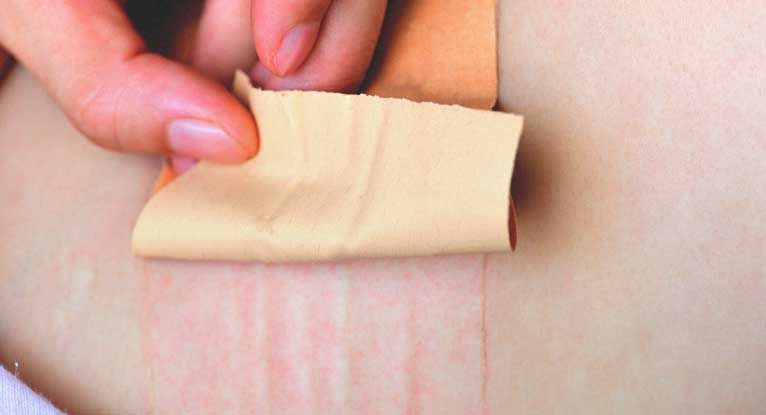
Applying a Transdermal Patch: A Complete Guide
A transdermal patch is a medical device designed to adhere to the skin and deliver medication over an extended time through the skin's layers into the bloodstream. This alternative method of drug administration can be particularly beneficial for individuals who prefer not to take oral medications or receive injections.
Understanding Transdermal Patches
Transdermal patches are utilized to deliver various medications into the body, including:
- Fentanyl: Used for managing severe pain.
- Nicotine: Aids in smoking cessation.
- Clonidine: Helps in treating hypertension.
While transdermal patches are user-friendly, proper application is crucial for their effectiveness. This guide outlines the necessary steps to apply and use a transdermal patch correctly.
Step-by-Step Instructions for Applying a Transdermal Patch
Follow these instructions to apply a transdermal patch safely. They can also be used by caregivers applying the patch to someone else.
Preparation
- Read the accompanying instructions that specify where to apply the patch, how long to wear it, and guidelines for removal or replacement.
- Wash your hands thoroughly with soap and water. If soap and water are not available, an alcohol-based hand sanitizer is an acceptable alternative.
Applying the Patch
- If you are wearing a previous patch containing the same medication, remove it by gently peeling back an edge and folding it with the sticky sides together before disposing of it in a sealed trash can.
- Select the appropriate application site as directed by healthcare professionals or drug packaging, usually on areas like the upper arm, chest, lower abdomen, or hip.
- Clean the chosen skin area to remove any residue such as dirt, lotions, or oils using a mild soap and warm water. Avoid using scented products and ensure the area is dried with a clean towel.
- Carefully open the patch package, taking care not to damage the patch inside. If the patch is damaged, discard it properly.
- Remove the protective liner from the patch as directed, ensuring not to touch the sticky side. If the liner has two parts, peel one part, press the patch onto the skin, then remove the second part and firmly press the patch down.
- Press the patch down with your palm to ensure it adheres smoothly without any wrinkles or bubbles.
Finishing the Process
- Dispose of the packaging in a sealed trash receptacle.
- Wash your hands again to eliminate any traces of medication.
Helpful Tips for Effective Usage
Selecting the Right Site
When determining where to place the patch, avoid areas of skin that:
- Are broken or have open wounds
- Have excessive hair (consider trimming if necessary)
- Get a lot of friction from clothing or belts
- Are sweaty or prone to becoming moist
- Have been recently shaved (allow a three-day waiting period before applying)
Follow Guidelines Closely
Different areas of the skin vary in thickness and absorption capabilities. Proper placement according to instructions can prevent side effects or reduced efficacy.
Vary Application Locations
To prevent skin irritation, it's advisable to rotate where you place the patch within the same general area of your body, following your doctor's suggestions.
Avoid Overlapping Patches
If you are using multiple patches, avoid overlapping them. Each patch must have complete contact with the skin for optimal drug delivery.
Management of Loose Patches
If a patch becomes loose or detaches, reference your doctor's or the patch’s instructions. Loosening can sometimes be addressed by pressing the patch back down. If a patch falls entirely off, it is best to discard it and apply a new patch at your next scheduled time.
Moisture Consideration
You can shower while wearing the patch; however, prolonged exposure to water could compromise its adherence or effectiveness.
Proper Storage and Disposal
Store unused patches securely and dispose of used patches properly, as both contain active medications that pose risks to children and pets.
Avoid Heat Sources
Do not apply heating pads or heat sources over the patch. Heat can accelerate drug release, potentially leading to overdose.
Troubleshooting Common Issues
If a patch does not adhere properly, dispose of it safely and start with a new one. Ensure that your skin is completely dry after washing to enhance adhesion.
It is normal to experience some skin irritation after removing a patch. However, if redness persists beyond three days, it is advisable to consult your healthcare provider.
Consult Your Healthcare Provider
Transdermal patches offer a convenient and efficient method for access to medication. If you have additional questions about their application or use, don’t hesitate to reach out to your doctor or pharmacist.
Reading How to Apply a Transdermal Patch
